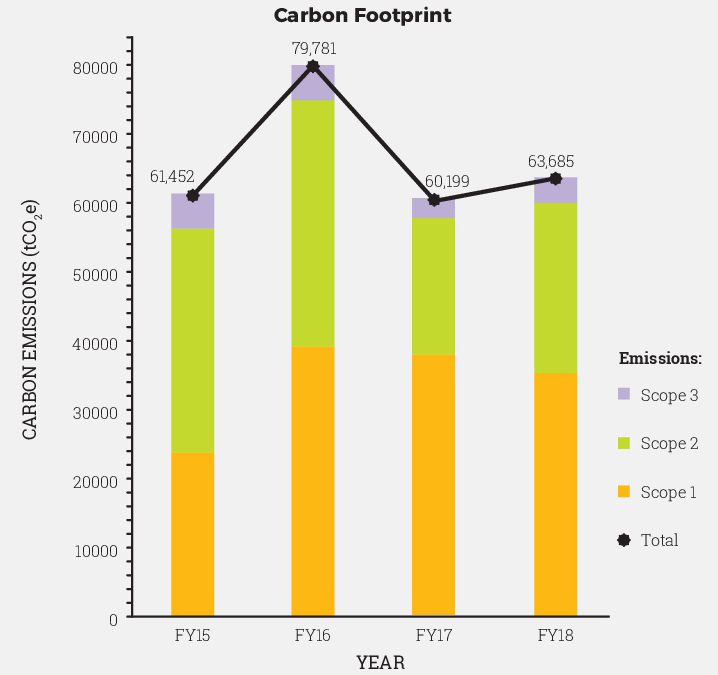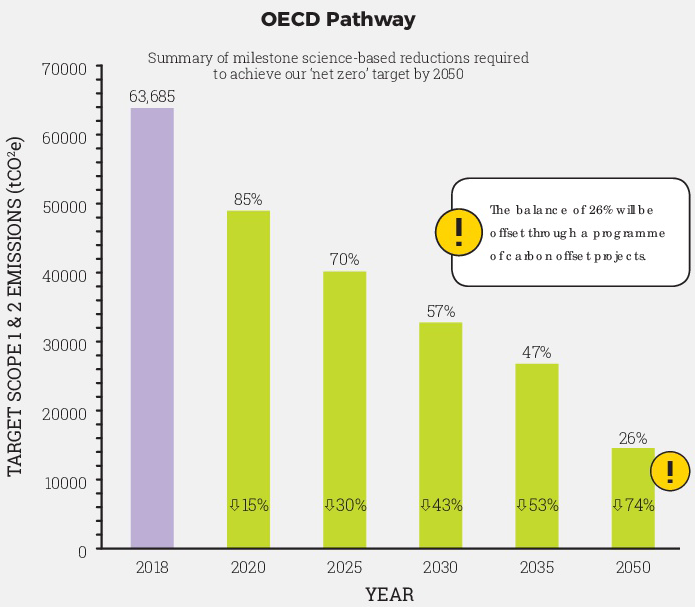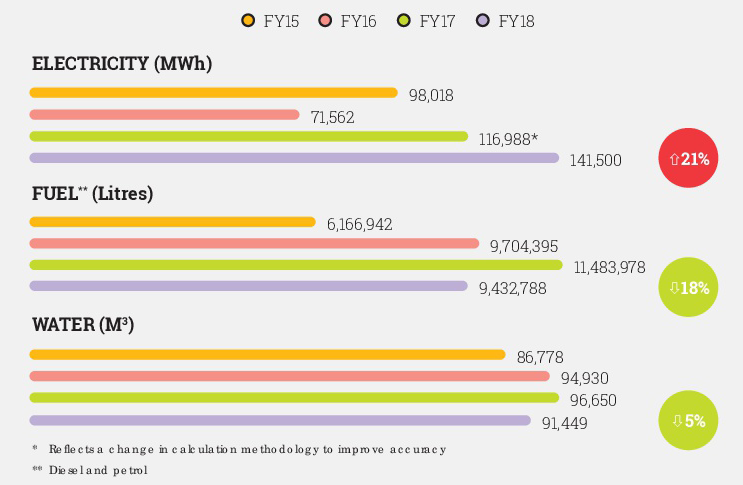ENVIRONMENTAL STEWARDSHIP
We continue to take our social and moral responsibility to manage our environmental impact very seriously. We recognise that environmental considerations are not separate from our core business, but have an impact on our overall commercial sustainability and success. We acknowledge the effects that our activities have on the environment, and remain committed to operating in an environmentally sound and sustainable way and to managing and reporting our environmental performance in an open and transparent manner.
As part of our ongoing commitment to the SDGs and to the environment, in particular, we are committed to maximising our positive impact and mitigating our negative impact through the continued alignment of our efforts with three of the goals this year: promoting the use of affordable and clean energy (SDG7), both within our network and the homes of employees; advocating for, implementing and promoting the responsible production and consumption of resources (SDG12); and guiding efforts towards achieving our ‘net zero’ carbon emitting aspiration through the development and implementation of climate change-related strategies and policies (SDG13).
KEY FOCUS AREAS DURING THE YEAR
• Net zero by 2050 initiatives
(monitoring our emissions and introducing science-based carbon reduction targets)
• Continued compliance
(compliance with regulations regarding plastics, air quality and noise levels)
• Waste management
(e-waste collection initiative and internal end-to-end waste management programme)
• ISO 14001 recertification
(upgrades to Environmental Management System (EMS) and successful transition to ISO 14001:2015 version)
MANAGING OUR EMISSIONS
We have committed to becoming a net zero carbon-emitting company by 2050. The current scientific consensus is that global carbon emissions need to be reduced by 80% by 2050 to avoid catastrophic climate change and we are determined to play our part. Our bold pledge has focused our thinking and efforts across the entire business, from improving energy efficiencies and reducing the energy consumed across our network and facilities to deploying renewable energy solutions and exploring carbon offset projects*.
As part of our commitment to meeting the net zero carbon target, we continue to monitor and report our carbon footprint. We have calculated and published our carbon footprint for the seventh time this year.
* ‘Carbon offset projects’ are carbon dioxide and/or greenhouse gas reducing initiatives in which companies (or individuals) can invest in order to counteract emissions produced somewhere else. Popular examples of such projects include tree growing and capturing methane gas at landfill sites. Offset projects allow companies that are dependent on carbon producing technologies to lessen their carbon footprints by investing in diverse carbon reducing projects that might not otherwise attract funding.








